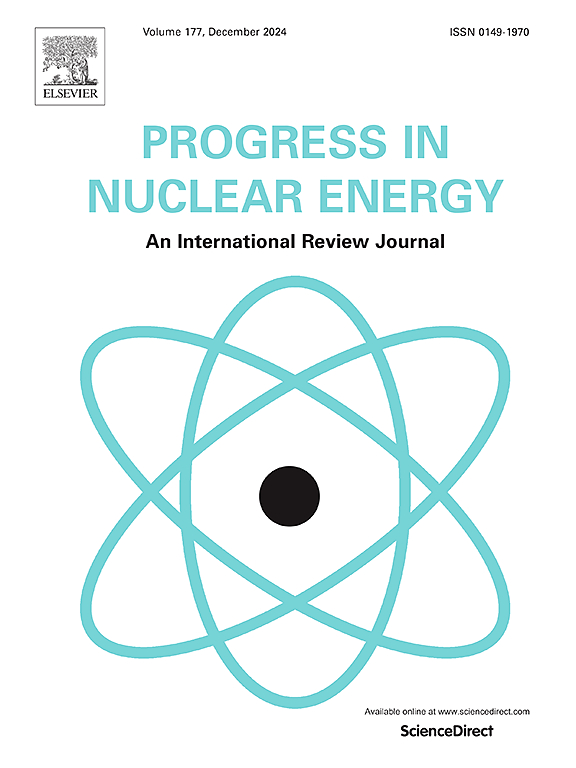Development of source term estimation model using Kalman filter technique and its evaluation against reversal method
IF 3.3
3区 工程技术
Q1 NUCLEAR SCIENCE & TECHNOLOGY
引用次数: 0
Abstract
A Kalman Filter (KF) algorithm is developed for radionuclide source term estimation based on real-time gamma dose rate and meteorological data. The algorithm uses Gaussian Plume Model (GPM) with nonlinear build-up factor in dose rate model to eliminate one source of uncertainty in source term estimation. The estimated release rate from the KF algorithm is compared against GPM reversal technique and tested against routine Ar-41 release data under dynamic meteorological condition. Several simulations are performed over two days periods in the months of February, March and April 2021 representing winter, summer and pre-monsoon weather conditions at Kalpakkam site. Results showed that the mean bias in KF predicted source term (bias ∼0.09 GBq.s−1) is 3 times lesser compared to GPM reversal method (bias ∼0.32 GBq.s−1). In KF algorithm a tuning based method is used for estimation of noise covariance matrix. The noise filtering/reduction methodology in KF algorithm reduces the fluctuations in KF predicted release rate (RMSE ∼0.13 GBq.s−1) by 3 times compared to GPM reversal method (RMSE ∼0.37 GBq.s−1). The correlation coefficient of KF estimated source term (CC ∼0.57) is 6 times more compared to the GPM reversal method (CC ∼0.10). Though both methods (KF and GPM reversal) could capture the observed dose rate variations with correlation coefficient of ∼0.65, on an average the predicted release rate is 2.0 and 4.5 times more using KF and GPM reversal techniques respectively compared to actual data. Overall, the KF estimates more reasonable and accurate source term compared to the GPM reversal method.
求助全文
约1分钟内获得全文
求助全文
来源期刊

Progress in Nuclear Energy
工程技术-核科学技术
CiteScore
5.30
自引率
14.80%
发文量
331
审稿时长
3.5 months
期刊介绍:
Progress in Nuclear Energy is an international review journal covering all aspects of nuclear science and engineering. In keeping with the maturity of nuclear power, articles on safety, siting and environmental problems are encouraged, as are those associated with economics and fuel management. However, basic physics and engineering will remain an important aspect of the editorial policy. Articles published are either of a review nature or present new material in more depth. They are aimed at researchers and technically-oriented managers working in the nuclear energy field.
Please note the following:
1) PNE seeks high quality research papers which are medium to long in length. Short research papers should be submitted to the journal Annals in Nuclear Energy.
2) PNE reserves the right to reject papers which are based solely on routine application of computer codes used to produce reactor designs or explain existing reactor phenomena. Such papers, although worthy, are best left as laboratory reports whereas Progress in Nuclear Energy seeks papers of originality, which are archival in nature, in the fields of mathematical and experimental nuclear technology, including fission, fusion (blanket physics, radiation damage), safety, materials aspects, economics, etc.
3) Review papers, which may occasionally be invited, are particularly sought by the journal in these fields.
 求助内容:
求助内容: 应助结果提醒方式:
应助结果提醒方式:


